Thursday without Warren.
Thursday, March 5th, 2020
Well, she’s still around…just not running for president any more.
In fact, I commend to you an interview she just did (live, tonight, Thursday, and you can catch it again at midnight, and then I suspect it will be chopped up and distibuted a la care throughout our worldwide series of tubes.) It’s a conversation with MSNBC’s Rachel Maddow in the sun room of her Cambridge house. It’s remarkable in so many facets, but in the last large segment near the end, she extemporaneously explains how all the current bad stuff—starting with the increasingly concentrated wealth of big banks, through the insanity of Donald Trump, and on to how the fragile economic house we’ve built is now being asked to withstand a global pandemic with a leadership team that believes in lies and magic.
It’s not a pretty picture, but it’s a brilliant analysis. I do so like it when smart people run for high office and then are willing to put up with so much crap. So much.
Thanks for your service to us, Senator Warren, past, present, and I sure hope, in the not too distant future.
Wednesday with Warren.
Wednesday, March 4th, 2020
After listening to an hour of conversation between Rachel Maddow and Sen. Bernie Sanders, I’m having a respectful debate with myself between my desire for significant structural change in the way stuff works here in the Executive, the Congress, and the Judiciary (I feel as if we need to do some deep trenching, clean out, and recalibration) and the part of me that understands politics are about compromise to a greater good for a great number of people.
I like a lot of what Sanders says, but I don’t hear a whiff of willingness to reach across and get things done from his corner.
And when Georgia’s primary rolls around, I’m voting for a leader who, I believe, can get stuff (healthcare, education, America’s role in a diverse world) done. That’s Elizabeth Warren. And as of this moment, on this rainy Wednesday, she’s still in the race. There are 16 days until the Georgia primary. Phew.
We’ll see what happens tomorrow.
Tuesday tallies.
Tuesday, March 3rd, 2020
It’s the night of Super Tuesday, and the cable and broadcast television networks are running at full speed, counting down to poll closings with gigantic clock numbers on sets that largely consist of a cavalcade of bright synchronized led screens tossing up piles of infographics that, until the polls actually close, are not really all that informative.
They made a pact, you see, an ethical choice, they’d tell you, not to report their exit poll numbers until the polls have closed in that state.
And we have these time zones, and one incredibly populous state out on the western edge of the continental US.
So they make do with the characterization questions from those same exit polls. They didn’t pledge to hold off on those. Alabama voters are “angry”, more than anything else. Black voters in Alabama are really really angry at the President, and…oh, wait, the polls in Alabama closed. Now we can decloak these results and, well, look at that, huge votes for Biden from those angry angry voters.
This goes on state by state as the sun sets over the west. We won’t get to California before 11 pm eastern…two and a half hours from now as I type this.
Maybe there’s some way to reform this time-zone dependent way of voting and tallying? Dunno. Play the music and roll the graphics. Woosh!
Monday newsday.
Monday, March 2nd, 2020
Rachel Maddow loves to get you into the tent, so to speak, by starting out with “this has been a really, really big news day.”

Yeah, this feels like it’s been one.
Villages v. Progress.
Sunday, March 1st, 2020
I have lately watched more old films from the 50s and 60s than I probably should admit. No, not the fine fiction you’d more likely find on Turner Classic Movies, but the juddery nonfiction you’d most likely had experienced through a Bell and Howell projector perched on a couple of a World Book Encyclopedia volumes in the back of your elementary school classroom.
The kind of experience where the martial music starts slow and wows up to speed, and the stentorian narrator speaks of American progress with a boomy optimism that these days makes me squirm a bit. There are splices and jumps at the beginning because the film has been shown and threaded and rewound and rethreaded so, so many times. But after 30 seconds or so the scratches subside and the opening titles conclude and we are deep into 20 minutes of exploring…
Detroit! Building those cars!
Freeways! Blasting our way through to our transportation future!
The miracle of touch tone dialing!
And most recently, I came across one entitled “The Eighth Sea,” an epic story of dam-building and river-rerouting and trenching and blasting and power generation as the rapid-filled St. Lawrence River was forged into the St. Lawrence Seaway, an engineering triumph of the late 50s. I was particularly interested in this because when we left the Upper Peninsula last fall, we drove through Canada and along the Ottawa and St. Lawrence, all the way out to Montréal and then Québéc City. We could see sections of the Ottawa with picturesque rapids, and we could see the results of the industrial labor along the St. Lawrence that made it possible to get freighters upriver to Lake Ontario and beyond.
This film starts with actors, all older white guys playing engineers talking in front of chalkboards about the challenges and plaintively saying “it couldn’t be done” followed by a sudden burst of confidence: “gentlemen, we can do this!” and then, well into the film, suddenly a youthful Walter Cronkite appears and takes us through in extensive detail, using models and tiny ships, the challenges of damming up this and trenching that and oh by the way, moving a village or two.
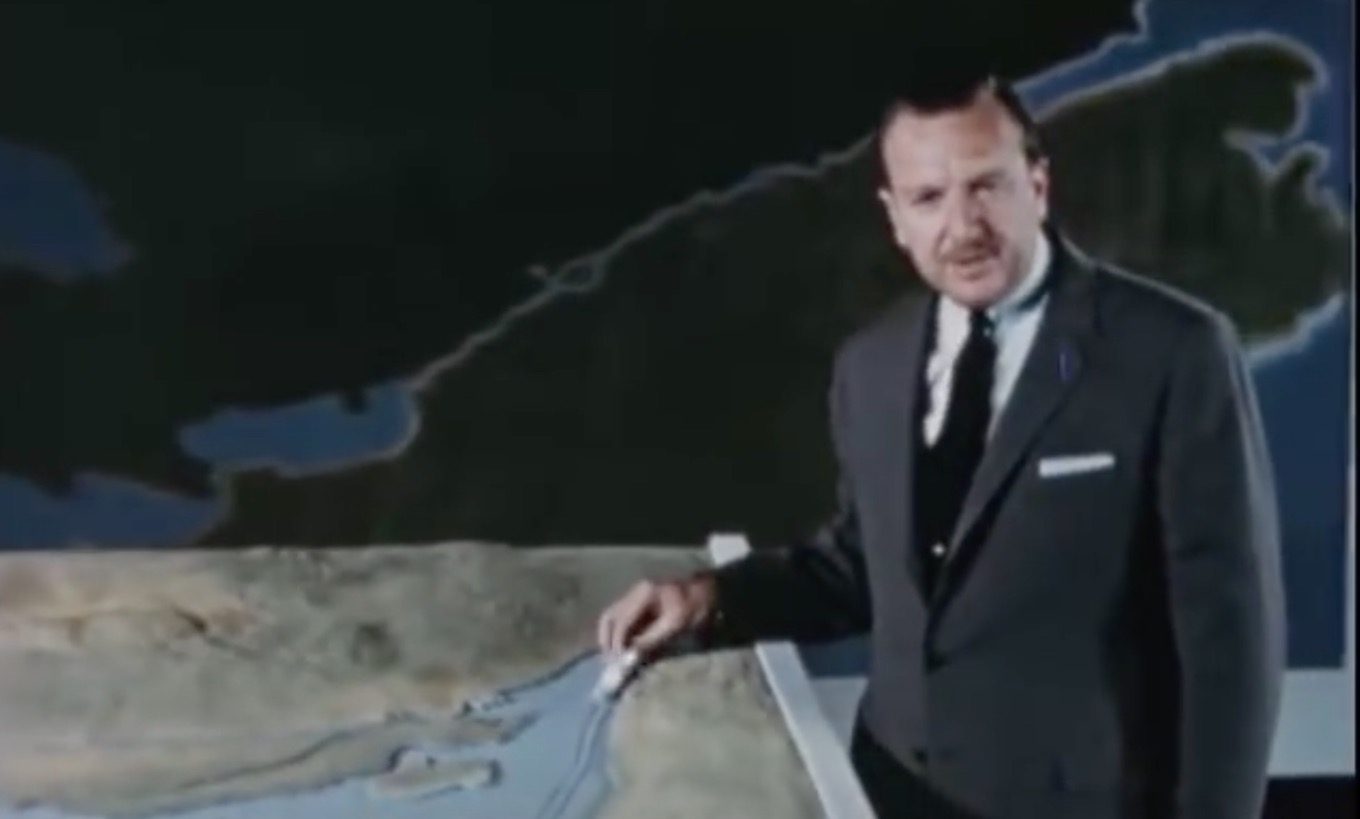
Walter Cronkite explains progress! From periscope film.com’s YouTube upload.
Uh…what? Yeah, turns out that a lot of people, their homes and farmland were displaced by this project. Cemeteries. Roads. Railroads. One town, Iroquois, Ontario was moved “in its entirety” more than a mile from its original location. There’s a great article at the Canadian Encyclopedia on The Lost Villages and the effects that are still part of their lives.
But they made it work. And big ocean-size freighters could lock and steam up into the Great Lakes and bring…well, eventually zebra mussels.
That’s progress?
Oh, and did I say big ocean-size freighters? Well, now the shipping industry bemoans the Seaway’s 1960s-era size because those massive ‘Neo-Panamax‘ container ships…ah, well, they’re too big.
That’s progress.
Too many K!
Saturday, February 29th, 2020

The sizes of television resolution, drawn to scale. Whether your TV is 40 inches, 52, or more, this is the number of underlying pixels.
Do you have a 4K TV? Are you contemplating an 8K TV? Maybe…take a breath.
I say this as a guy who has a 40 inch HD set (that’s 1920×1080 pixels) in a smallish room, and given the distances, the available content, and our aging eyes…that’s plenty good enough.
An article in TechHive sums it up in a headline: 8K vs 4K TVs: Double-blind study by Warner Bros. et al reveals most consumers can’t tell the difference.
In collaboration with Pixar, Amazon Prime Video, LG, and the American Society of Cinematographers (ASC), Warner Bros. recently addressed this question in a well-designed, double-blind study to see if people could discern a difference between 4K and 8K with a variety of content.
For the purposes of this article, “4K” refers to a resolution of 3840 x 2160, and “8K” refers to a resolution of 7680 x 4320. As you might already know, these definitions are something of a misnomer; to be technically accurate, “4K” really means 4096 x 2160 and “8K” means 8192 x 4320.
If that last part makes you scratch your head slightly, I do have Wikipedia links for 4K UHD TV and 8K UHD TV. Dig in!
Here’s a PDF from a SMPTE conference in 2012 that dives deep—maybe too deep—discusses the concepts of simple acuity, hyperacuity, and Snellen acuity. This is an extremely technical paper and I’m certainly not urging that you plow through it. It’s filled with stuff like this:

Oh, that Snellen! The guy who came up with the standard eye chart!
Bottom line, there’s a basic and yet quite satisfying viewing experience for which immersion is not the point, and when you live in a small apartment, immersion might not even be possible—the angles and distances don’t work out. You just want to see the numbers on the election returns, or the soccer ball, or the hockey puck.
And perhaps more importantly, much of the content out there is barely ‘1K’—HD, which, by the way, is a very nice image to look at from across the room indeed. And if it’s upsampled to a higher resolution, that’s a procedure that scientists are improving on, but you still can’t manufacture pixels out of thin air. Real resolution is the resolution you start out with.
Aspects of news.
Friday, February 28th, 2020
After hearing about a short film promoted by Apple (because of course it was shot on their flagship product), I winced after I rolled it on YouTube. It was in a vertical format, not the landscape aspect ratio that the world has experienced in movie theaters and on television screens pretty much since there were movie houses and TVs.
I joke about it a lot, but vertical videos for telling stories is just not a great idea. I should pause here for thousands of people who say “but the modern stories are Instagram stories, and they are verticals!! Books are verticals! People are now watching this sort of content on their phones and only on their phones, and that’s on a vertical screen!”
Even on my phone, watching the Apple video, I craved seeing what was to the left or to the right of my screen. And no, I never have similar cravings for “what’s above or below the frame” on landscape (wide) presentations. Maybe it has something to do with our eyes being mounted in our heads in landscape orientation.
And then I watched a clip or two online from EuroNews of their coverage of the coronavirus crisis. They’ve decided to visually split the difference, doing their videos in square format…and these short clips are not carefully crafted packages where a reporter speaks the who what when and where of the story…a bullet-point-like subset of that information appears on a bunch of large-type overlaid titles, almost always accompanied by what some editor thinks is appropriate music (that they have a license to use.) Oh, sad music for a pandemic…cartoony Benny Hill-style music for someone doing something embarrassing for the cameras….faux-majestic for coverage of the Royals.
These blip-news-verts are disposable, vapid, can be cranked out by minimum wage toilers in edit rooms, and are instantly forgettable. And if that’s what visual journalism is today, is there anyone who really wants to label that good journalism?
So what is good journalism in this time of fast and vertical? I do have one link for you: here’s some good reporting on urban issues from a guy in Vancouver, good enough that his work has been picked up and showcased by the CBC, Canada’s national public network. If you like that one, he has some others on the YouTube.
Budget image.
Thursday, February 27th, 2020
It’s a cold and clear day here in Atlanta, which is very different from this YouTube frame (life this afternoon) of an eastbound train in Fostoria, Ohio.

It’s flurrying up a storm—and it takes a lot of bandwidth to push this picture out.
This is actually a nice high-resolution camera, but like many digital sources in the tubes of the internet, it’s on a bit-budget. If the picture is relatively static‚ if relatively few pixels change from one thirtieth of a second to the next, then the camera system only needs to transmit the changed pixels, and can devote more of its bandwidth to transmitting more fine details of the part of the picture that isn’t changing moment to moment.
Throw a flurry of snowflakes—or a ton of confetti at a political convention—into the picture, and it dumps down to a much lower resolution, because more is changing from frame to frame, and the system has to do its best to depict that.
It’s amazing how low-def high-definition tv can get when the finite number of bits that can fit in the pipe are consumed by tiny flickery fast-moving things.

Same camera, less snow = less of a change from frame to frame.
Wednesday.
Wednesday, February 26th, 2020
I don’t think this is an average Wednesday because I’m not sure we have those anymore.
- The market continued its downward trend in response to Coronavirus concerns and…wait, I’m being told that the President said it was going down in response to the Democrats debating. Hmmm. Let’s stick with that first explanation.
- We were told it would rain heavily in the city this afternoon; it kind of misted and spat for the most part.
- We ran (no, not literally) into our niece in the Trader Joe’s parking lot. That was a nice perk of the day.
- The President appointed a guy to run the US Coronavirus response. A guy whose policies led to an HIV crisis in Indiana in 2015 because he sure didn’t want Planned Parenthood to…uh, do what it does so well. You know, our vice-president.
- We quickly turned away from that and watched Survivor. Read into that what you will.
- Later that evening, we watched coverage of the global health crisis and the US’s reaction to it on BBC World News, CBC’s The National and France 24. Somehow reassuring to be reminded that we’re all in this together. For the most part.
Open mic night.
Tuesday, February 25th, 2020
The South Carolina Democratic Debate. Seven people on stage.

The CNN analysis immediately afterwards: hey, eight people!
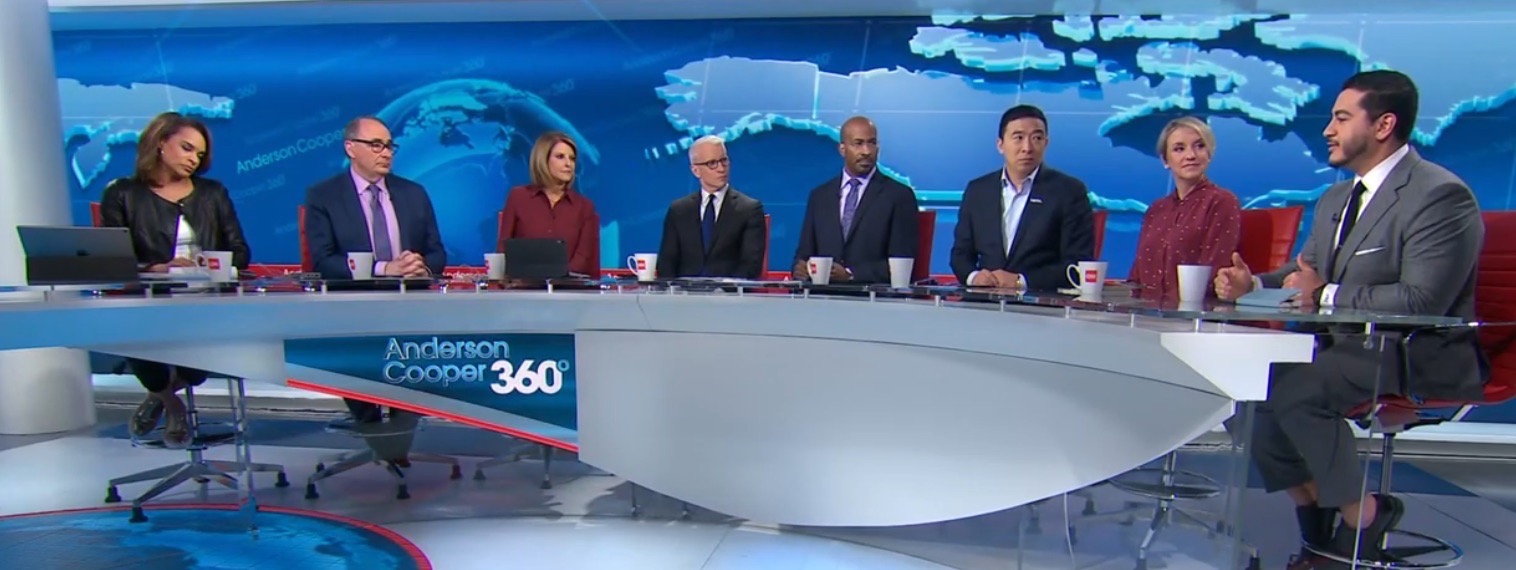
Although a bit of light was shed, the analysis by the eight about the performance of the seven was: hey, why weren’t those moderators at CBS doing a better job? You can’t just let them all talk at once!
Yeah, that never happens on CNN.
$5 rebirth.
Monday, February 24th, 2020
I’ve been spending a lot of this evening repairing the $5 Raspberry Pi Zero W computer I use to put standard definition images up on an old Sony Trinitron monitor in my office. Why? Because (besides the cool factor) I want to remember what standard definition—the old television, before everything went 16×9 and HD—felt like.
And did I mention this was a $5 computer?
Which is all well and good until I make a minor mistake, or the internet makes a tiny mistake, or the Raspberry Pi’s operating system makes a tiny mistake, usually in the midst of backing up or restoring zillions of tiny Linux packages—chunks of code—that make this 2.59 inch x 1.2 inch circuit board do its magic.
And then, it’s dead. Nothing happens. No lights on the circuit board. But I don’t despair, I plow through a convoluted multistep recipe that involves scrolling through screen after screen of stuff that looks like this:
Get:34 http://mirror.pit.teraswitch.com/raspbian/raspbian buster/main armhf libmbim-proxy armhf 1.18.0-1 [70.7 kB]
Get:40 http://mirror.pit.teraswitch.com/raspbian/raspbian buster/main armhf libposix-strptime-perl armhf 0.13-1+b4 [8856 B]
Get:41 http://mirror.pit.teraswitch.com/raspbian/raspbian buster/main armhf libqmi-glib5 armhf 1.22.0-1.2 [443 kB]
Get:44 http://mirror.pit.teraswitch.com/raspbian/raspbian buster/main armhf libunicode-linebreak-perl armhf 0.0.20190101-1 [98.3 kB]
Get:45 http://mirror.pit.teraswitch.com/raspbian/raspbian buster/main armhf libva-wayland2 armhf 2.4.0-1 [17.4 kB]
Get:46 http://mirror.pit.teraswitch.com/raspbian/raspbian buster/main armhf modemmanager armhf 1.10.0-1 [1363 kB]
Get:47 http://mirror.pit.teraswitch.com/raspbian/raspbian buster/main armhf mpv armhf 0.29.1-1 [831 kB]
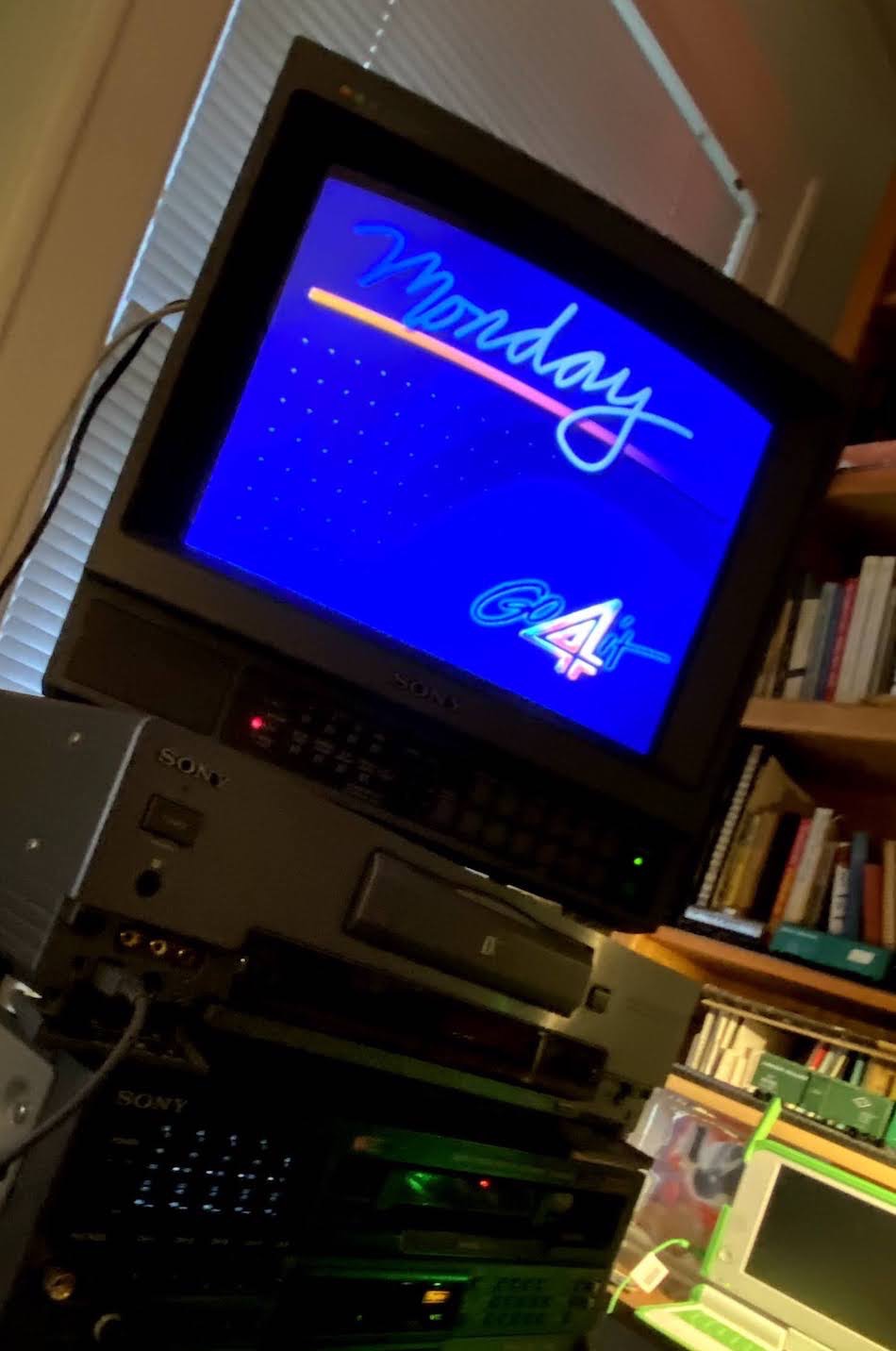 .
.
..and after a great deal of holding-one’s-mouth-correctly, it comes back to life, as if nothing has happened.
This time.
Did I mention it’s a $5 computer?
Future snaps.
Sunday, February 23rd, 2020
Two things would have clued me from these pictures that I was living in The World Of The Future. The arch blue winglets on our Delta 737-900ER (no, not the model with the troubled autopilot system)…
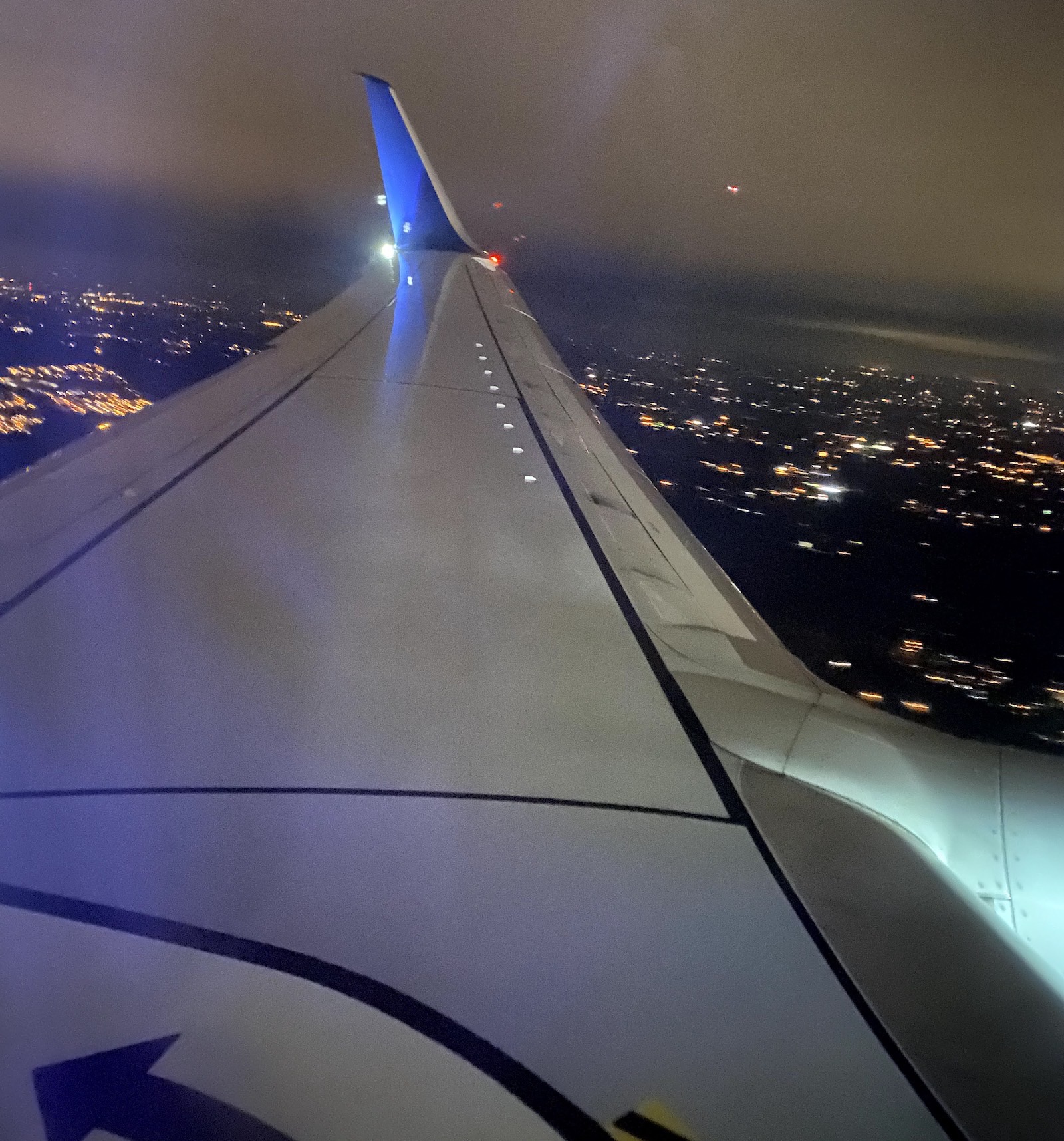
…and the frankly spectacular arches that now cover the North and South terminals dropoff/pickup lanes at Hartsfield Jackson Airport. At night, they’re a cascade of LEDs (that yes, of course, can change colors, just like the top of the Empire State Building). The canopies also of course deflect some of the heat and all of the rain on the summer afternoons like we have here.
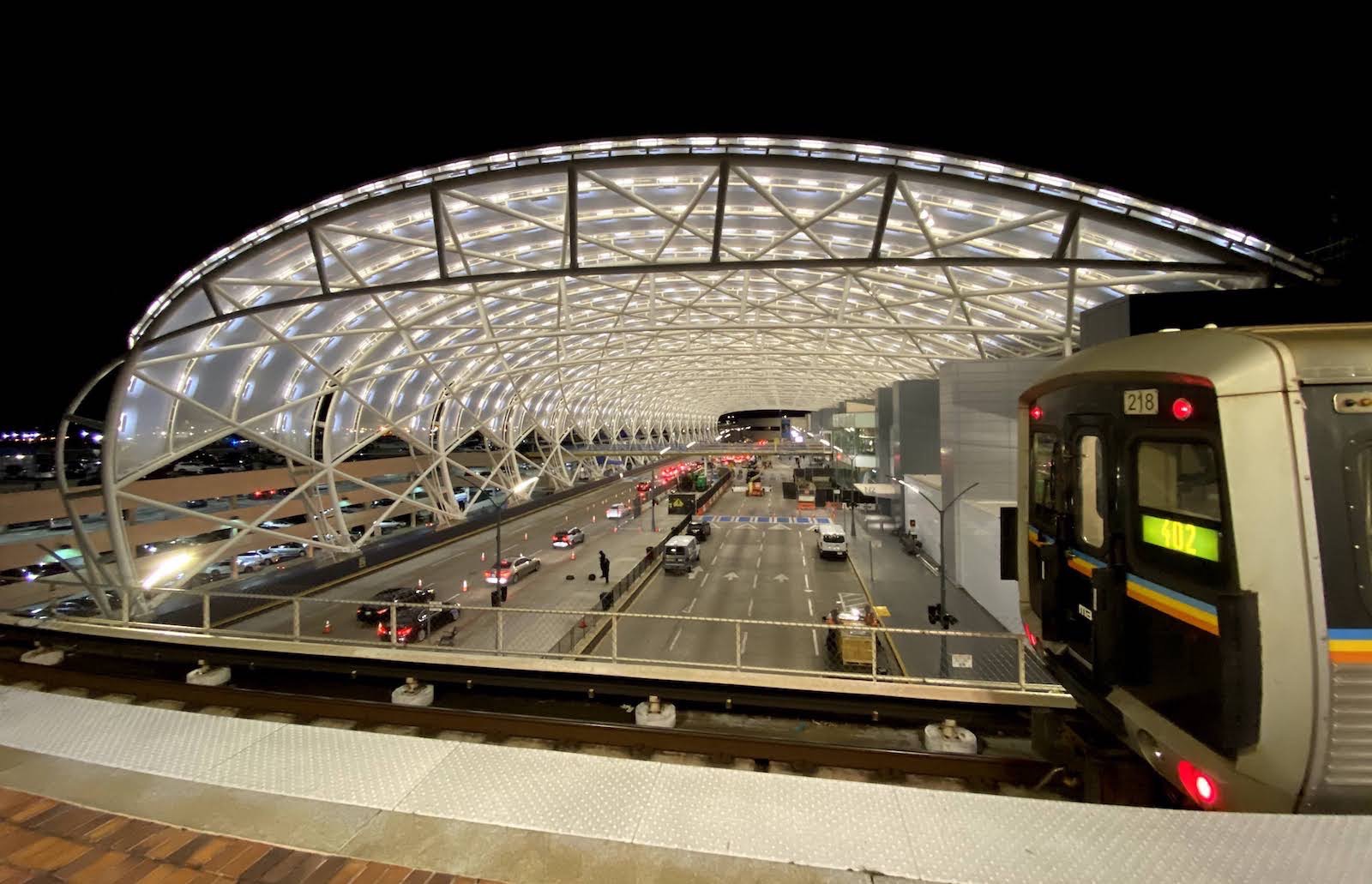
But I suppose the real dead giveaway is that I have a phone that can take pictures this nice at night. The future! Welcome!
Reliable gourmet.
Saturday, February 22nd, 2020
At the southern end of Lake City Way, past seemingly endless used car lots and pot and vape shops, lies a culinary promised land:

Really yummy food in a very unpreposessing setting. Nice way to end our visit.
(Live) van life.
Friday, February 21st, 2020
I really need a picture for this post to be complete, but I’ve seen 6 or 7 apparent van conversions out here in Seattle where people have crafted various rolling behemoths into their day-in, day-out home. Often parked near the ocean or in an out of the way park, these mobile homes range from the deluxe to the scavenged-looking, and for some reason they seem to include one or more large dogs along with the young couple who have decided to live The Life Nomadic.
Today down by Golden Gardens Park I spotted an early-2000s Ford Van that had (to me) an obvious provenience: it was a former TV News ENG truck, probably one with a large mast (now gone) on top. Its initial conversion, from empty box to one brimming with TV gear, was done by Frontline Communications of Clearwater, Florida. Easy to tell: it still had the Frontline stickers and the large panel on the right side that engineers plugged cable after cable into…and the platform on top that they would climb on to point the antenna toward the microwave receiver at the station.
Now, it would seem, it is a home. Dog included.
Tonight’s topic.
Thursday, February 20th, 2020

A circuitboard for a really old minicomputer made by the Digital Equipment Company in the 1970s. Seen at the Living Computer Museum in Seattle.
I’m of a certain age that I know enough people who discovered communicating through computers and the internet roughly on the same timetable as me and for many of us, there was a prime moment when the thing called the blog was in fact, the thing. The idea that you could have your own domain and write whatever you wanted and you could reach a potential audience of untold…well, probably not millions. Probably not even thousands. But an audience! Humans! Clicking and reading!
Just as you are doing right now.
Sure, all kinds of much more powerful and flexible and sometimes quite Orwellian services made it easier to share what was on your mind or in front of your eyeballs at any given moment with a quick flick, twitch, or poke, but for sheer purity of presentation, this here blog thing is not a bad way to go.
But it’s not the late 1990s anymore, it’s the early 2020s, and the things people think about and the stuff they might want to “put out there” have doubtless changed. So I spent a few minutes scrolling and reading the words published by friends like Nancy and the fabled Kayak Woman, and of course, my favorite for so many reasons, Sammy. They put a lot into these discrete online collections of who they are, and as I read, I feel as if I’m spending a moment with them at the end of their day, as they pour a thought or two into a WordPress template and hit ‘publish’ with great satisfaction.
And, hmm. What’s tonight’s topic? What’s new in their worlds? Maybe their blogs are not so different over the years in tone and focus…just the particulars of the story have changed. And the resolution of the cameras have improved.
But topics? The continued decline of American society. The magic of a place close to their hearts. The triumphs and challenges of family and other loved ones.
Human things.
Frayed nerves.
Wednesday, February 19th, 2020

Okay, this is the first democratic debate (of this campaign) I watched.
And there were indeed “fireworks”, as cable pundits would like to say.
First there was Mike Bloomberg, an easy target. In the first few minutes, Bloomberg was eviscerated by Elizabeth Warren over his stop-and-frisk policies and his general billionariness; she later challenged him on an ambiguous number of harassment suits held under NDAs. How many, Mike? Will you release the women from the NDA component? Nope, he wouldn’t.
After a Telemundo questioner pointed out that Amy Klobuchar was unable to name the President of Mexico in an interview, Pete Buttigieg piled on to Klobuchar making a not-invalid case about being prepared and informed. The senator looked (to me) as if she was more than prepared to violently remove the head of the former South Bend mayor.
Now they’re thrashing through climate change.
My takeaway at this hour remains: Elizabeth Warren is so smart. And I really like smart candidates and presidents.

